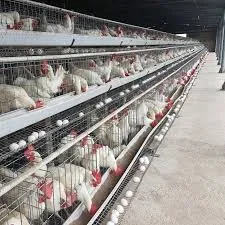layer chicken cage
Oct . 14, 2024 16:46 Back to list
layer chicken cage
The Layer Chicken Cage An Efficient Solution for Poultry Farming
The poultry industry has evolved dramatically over the years, with innovative practices that prioritize both animal welfare and efficient production. One of the most significant advancements in this field is the use of layer chicken cages. These cages are specifically designed for housing hens that are raised for egg production. This article delves into the features, benefits, and challenges associated with layer chicken cages, highlighting their essential role in modern poultry farming.
Layer chicken cages come in various styles, including conventional, enriched, and aviary systems. Conventional cages are typically stacked in rows, providing each hen with a small allotted space. While these cages maximize the number of birds that can be housed in a limited area, they have been criticized for their constraints on animal welfare. In response to these concerns, enriched cages have been developed. These cages offer slightly more space and include features such as nesting areas, perches, and scratching zones, allowing hens to exhibit more natural behaviors.
Aviary systems take the concept of chicken housing to another level, providing a multi-level environment that permits hens to roam freely within a controlled setting. Each of these designs has its pros and cons, but layer chicken cages in general have proven to be effective in increasing egg production rates, reducing the cost of feed per egg produced, and simplifying the management of flocks.
One of the primary benefits of using layer chicken cages is the efficiency in managing feed and water intake
. In a well-designed cage system, feeders and waterers are strategically placed to ensure that every hen has access to food and hydration. This accessibility leads to improved growth rates and, ultimately, higher egg yields. Moreover, the use of cages significantly reduces the amount of food waste compared to traditional free-range systems, where hens may scatter feed or spoil it in outdoor environments.layer chicken cage

Another advantage is biosecurity. Layer chicken cages help minimize the transmission of diseases among birds. Containing hens within a controlled environment means that potential pathogens are less likely to spread, thus enhancing overall flock health. Additionally, these systems facilitate easier monitoring and management of individual bird health, making it simpler to identify issues such as disease outbreaks early on.
However, the use of layer chicken cages is not without its controversies. Animal welfare advocates argue that even enriched and aviary systems do not provide sufficient space or freedom for hens to express their natural behaviors. Critics point out that prolonged confinement can lead to stress and increased aggression among birds. Consequently, there is an ongoing debate about the balance between production efficiency and the ethical treatment of animals in poultry farming.
The regulatory landscape surrounding layer chicken cages is also changing. Many countries and regions are imposing stricter standards regarding the space and conditions under which hens can be kept. This evolution pushes producers to adapt and adopt more welfare-friendly systems while still maintaining profitability.
In conclusion, layer chicken cages represent a pivotal innovation in the poultry industry, offering both productivity and efficiency. As the demand for eggs continues to rise globally, the design and management of these cages must simultaneously evolve to ensure the welfare of hens. By striking a balance between production efficiency and humane treatment, the poultry industry can work towards a sustainable future that benefits both farmers and consumers alike.
-
Automatic Feeding Line System-Pan Feeder Nipple Drinker|Anping County Yize Metal Products Co., Ltd.
NewsJul.29,2025
-
Hot Sale 24 & 18 Door Rabbit Cages - Premium Breeding Solutions
NewsJul.25,2025
-
Automatic Feeding Line System Pan Feeder Nipple Drinker - Anping County Yize Metal Products Co., Ltd.
NewsJul.21,2025
-
Automatic Feeding Line System Pan Feeder Nipple Drinker - Anping County Yize Metal Products Co., Ltd.
NewsJul.21,2025
-
Automatic Feeding Line System - Anping Yize | Precision & Nipple
NewsJul.21,2025
-
Automatic Feeding Line System - Anping Yize | Precision & Nipple
NewsJul.21,2025






